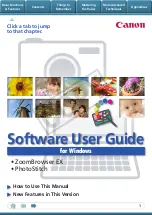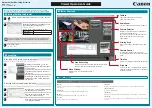
Designing Using LDSII
Chapter 1
16
LDSII Programming Guide - 880015-0123
orientation may be; left will always be the left edge of the characters when the media exits
the printer.
Kerning is when one character in a proportional font can be slid under another character to
achieve a more appealing result. Kerning is enabled and used by default unless a value for
the FJ parameter is entered. If a value is entered then kerning would have to be selected
by adding “100” to the justification value.
Proportionality refers to whether the characters are all different widths or all the same. A
proportional font has characters that are mostly different widths. A mono-spaced font has
characters that are all the same width, except generally for punctuation.
When selecting the alignment value, text and/or bar codes will be aligned from the XB and
YB insertion point. The justified function, to be aligned, can be specified by using a
combination of the insertion point and the FW (Field Width) parameter so that the text is
spaced to run this entire distance.
The desired alignment value can be determined from the table below:
Composition
Horizontal Alignment
Horizontal
Vertical
Left
Center
Right
Justified
Above
Baseline
Top
11
12
13
14
Vertical
Alignment
Below
Baseline
Bottom
31
32
33
34
Add 100 for kerning and add 200 for mono-spacing to the FJ value to produce effects.
Table 4
Field Justifications
For Example: A typical European language would be left horizontal and normal vertical
alignment, which would be a va
lue of “11” for the “FJ” parameter. If kerning was also
desired, the proper value would then be “111” and for mono spacing it would be “211”.
1.5.10 FW (Field Width)
XB, YB, CI, SW, SH, AI, DN, FO, FJ,
FW
, CS, FC, CC
The field width parameter sets the width of a text field, using the current unit of measure,
along the direction of composition. This is used to limit the physical width of the cell where
the appropriate data is to be placed. If the desired data is longer than the field width setting,
then characters outside the cell width setting will not be printed.
1.5.11 CS (Character Spacing)
XB, YB, CI, SW, SH, AI, DN, FO, FJ, FW,
CS
, FC, CC
This parameter adjusts the spacing between each character or the inter-character spacing.
The change is made relative to a default, where omitting this parameter or entering a “0”
causes the default to be used. The specified spacing value is in units of typesetting points,
where 1 point = 1/72”. Positive point values increase the default spacing while negative
Summary of Contents for LDS II
Page 2: ...This Page Intentionally Left Blank...
Page 3: ...This Page Intentionally Left Blank...
Page 14: ...x LDSII Programming Guide 880015 0123...
Page 18: ...2 LDSII Programming Guide 880015 0123...
Page 72: ...56 LDSII Programming Guide 880015 0123...
Page 92: ...76 LDSII Programming Guide 880015 0123...
Page 108: ...92 LDSII Programming Guide 880015 0123...
Page 112: ...96 LDSII Programming Guide 880015 0123...
Page 116: ...100 LDSII Programming Guide 880015 0123...
Page 119: ...LDSII Programming Guide 880015 0123 103 User Notes...
Page 120: ......
Page 121: ......
















































